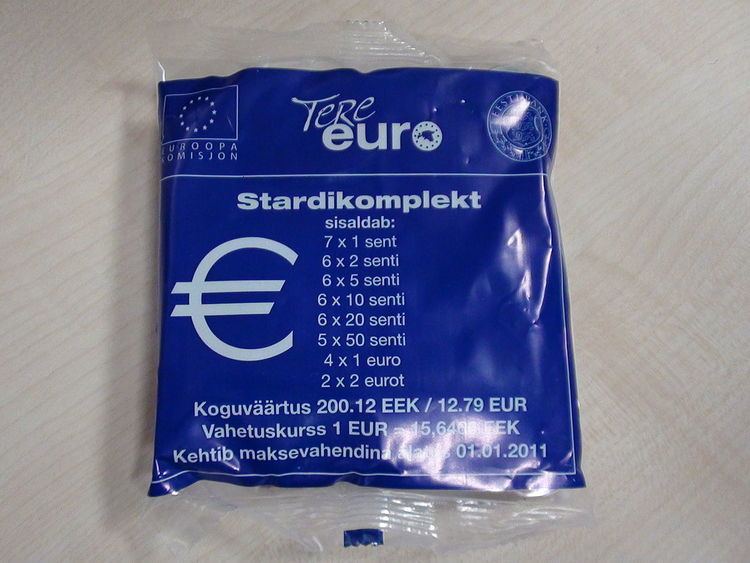 | ||
Estonian euro coins feature a single design for all eight coins. This is a design by Lembit Lõhmus and features a silhouette map of Estonia together with the word Eesti (Estonia) and twelve stars, symbolic of the European Union, surrounding the map. This was the winning design in a public vote of ten announced in December 2004.
Contents
Estonian euro coins entered circulation on 1 January 2011. Estonia is the fifth of ten states that joined the EU in 2004, and the first ex-Soviet republic, to join the eurozone. Of the ten new member states, Estonia was the first to unveil its design. It originally planned to adopt the euro on 1 January 2007; however, it did not formally apply when Slovenia did, and officially changed its target date to 1 January 2008, and later, to 1 January 2011. On 12 May 2010 the European Commission announced that Estonia had met all criteria to join the eurozone. On 8 June 2010, the EU finance ministers agreed that Estonia would be able to join the euro on 1 January 2011. On 13 July 2010, Estonia received the final approval from the ECOFIN to adopt the euro as from 1 January 2011. On the same date the exchange rate at which the kroon would be exchanged for the euro (€1 = 15.6466 krooni) was also announced. On 20 July 2010, mass production of Estonian euro coins began in the Mint of Finland. 2012 coins were produced by the Royal Dutch Mint, having won the production bid.
Estonian euro design
For images of the common side and a detailed description of the coins, see euro coins. A design competition was held for the design of the Estonian euro coins. 134 designs were submitted to the competition.
Circulating mintage quantities
* No coins were minted that year for that denomination
Design controversy
Ethnic Setos have protested the design of the coin, claiming that the outline of the map of Estonia does not include the former south eastern region of Estonia that constituted a part of the Seto homeland annexed by Stalin during the occupation of the Baltic states. On the other hand, a Russian lawyer Sergei Seredenko claimed that the outline included Russian-controlled areas. The Russian embassy was prompted to issue a statement that the euro coins do indeed depict the current borders of the country's territory.
